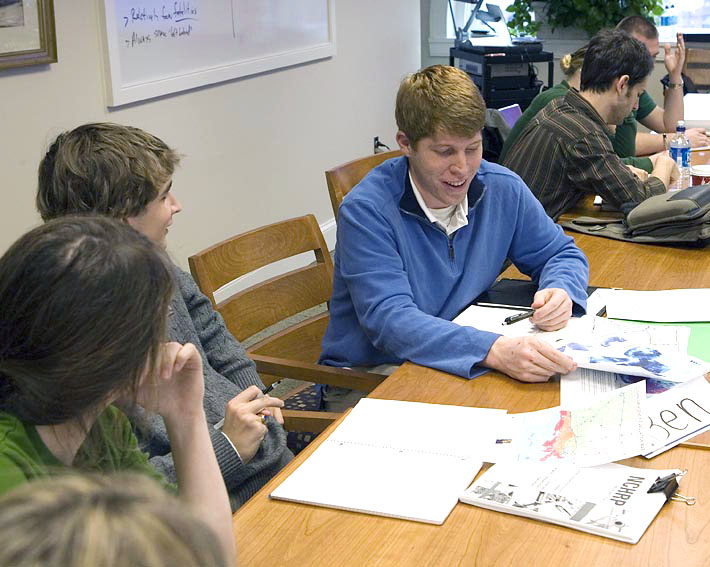January 4, 2006 — What is the relationship between technology and citizenship? How did reliance on technology both make New Orleans possible and make it vulnerable? What are the key technical, organizational and cultural factors that contributed to the disaster associated with Katrina? How can we rebuild a city that incorporates the best of architectural and engineering design? As citizens, how can we participate in such discussions as well as in relief efforts?
To understand these interrelated issues and begin to answer these questions, 24 University of Virginia undergraduate students will spend a two-week January Term course, Jan. 3 through Jan. 16, looking at Hurricane Katrina from a variety of disciplines.
For the first four days, they will meet on the Grounds at U.Va. to examine the city of New Orleans before, during and after Hurricane Katrina from the viewpoint of the architect, the engineer, the scientist, the policymaker and the media expert. They will not only look at what led up to this terrible disaster, but also at how each of these fields might approach the recovery efforts.
After studying the city from the viewpoints of these disciplines, they will travel to New Orleans to engage in a week’s worth of recovery efforts.
“It’s a great way to focus on the Jeffersonian curriculum — to give students an idea that they need to educate themselves in a society in which technology takes such a large role,” said Kay Neeley, associate professor in the Department of Science, Technology and Culture within the School of Engineering and Applied Science.
The course brings together faculty and students from different schools within the University and provides opportunities students would not otherwise have, said Nicole Hurd, director of U.Va.’s Center for Undergraduate Excellence and one of the course’s lead faculty members.
The 24 students in the course were selected from a pool of applicants based on essays about their interest in taking the course. Participants include 15 students from the College of Arts and Sciences, eight engineering students and one architecture student.
During the four days of academic study at U.Va., they will meet with experts who will provide perspectives in architecture, engineering, science, climate, ecology, history, policymaking and the media, and will discuss how recovery might be approached in each of these fields.
Once they students arrive for the week-long experience in New Orleans, they will be involved in a variety of activities. They will:
- help returning Xavier University Preparatory School seniors complete college applications;
- assist Xavier Prep with reorganization efforts associated with Xavier’s merger with two other schools affected by the disaster;
- participate in clean-up and light demolition work at Xavier University, the first and only African-American Catholic College in the country, which is located near one of the failed levees;
- help with community after-school care;
- work and take meals in soup kitchens;
- tour the city and levee with EPA officials; and,
- visit with University of Virginia alumni in the area and with the family of one of the undergraduates participating in the J-Term course, who is from New Orleans.
The January Term class will become a prototype for a University-wide seminar that will be held during the regular academic term and that will look at areas where there is tension between technology and democracy. The goal of this initiative is to encourage students to think about democratic principles and how they apply to technology.
During the fall semester, the University accommodated 140 students — 109 in the College — who were displaced from their New Orleans-area institutions by Hurricane Katrina.
Media Contact
Article Information
January 4, 2006
/content/uva-students-tackle-new-orleans-and-katrina-issues-customized-january-term-course

